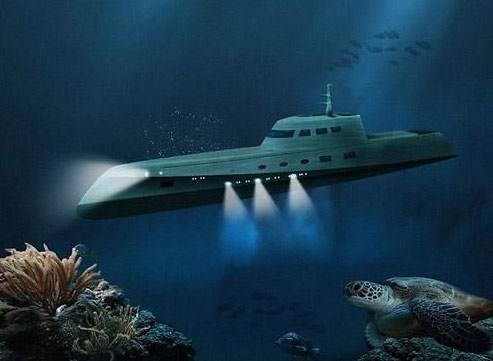A submarine works in much the same way, with one major exception: a sub can alter its buoyancy by manipulating overall density.
海底工作大致是相同的,但有一點(diǎn)例外:通過(guò)操控整體密度,潛水艇能夠改變其浮力。
Submarines come equipped with tanks that can be filled with various levels of water and air.
潛艇都配備蓄水池,貯備著不同的水量和空氣。

When a sub floats on the surface, its tanks are filled mostly with air, which makes the sub less dense than the surrounding water.
但潛水艇浮在水面的時(shí)候,它的蓄水池里大部分都是空氣,這樣可以使得潛水艇的密度小于水的密度。
When the crew wants to make the sub sink they open valves to allow just enough water to flood the tanks and make the sub sink to a specific depth.
若工作人員想要使?jié)撏鲁粒麄兛梢源蜷_(kāi)閥門,讓足夠多的水流入蓄水池,然后使其下沉到一個(gè)特定的深度。
Of course the sub must be able to rise again after filling its tanks with water.
當(dāng)然將蓄水池注滿水,潛艇會(huì)再次上升。
To that end submarines carry tanks of compressed air that can be used to displace water from the tanks and increase buoyancy.
最后潛艇會(huì)攜帶帶有壓縮空氣的蓄水池,用來(lái)替換蓄水池中的水,增加浮力。
來(lái)源:可可英語(yǔ) http://www.ccdyzl.cn/Article/202008/616459.shtml











